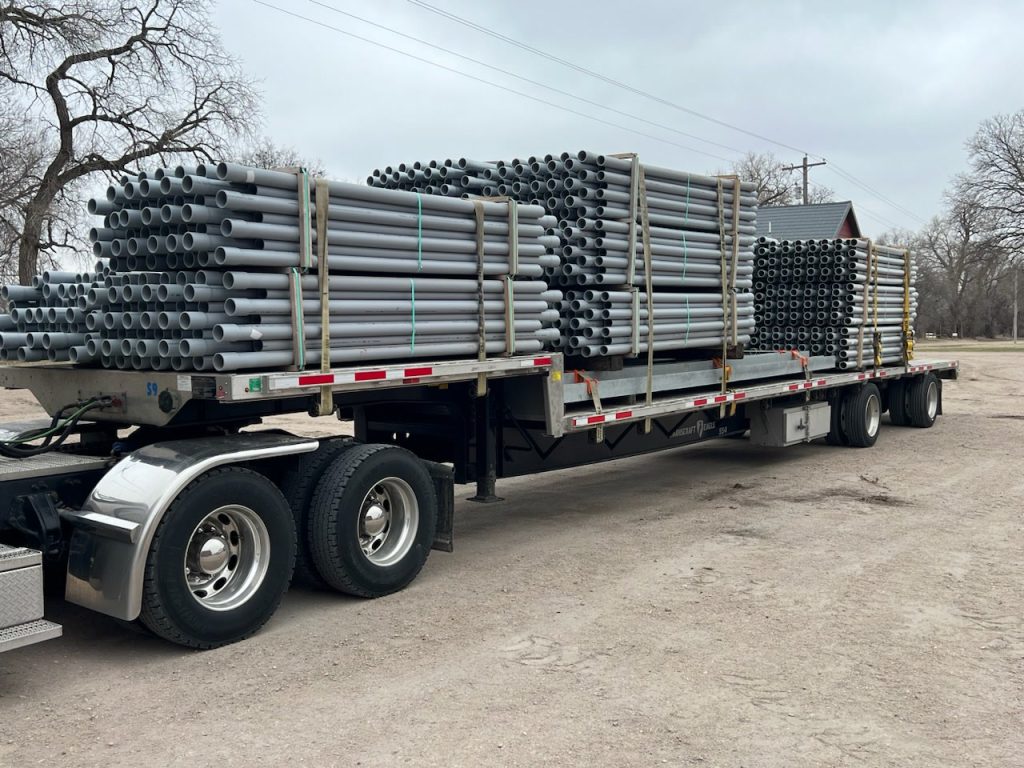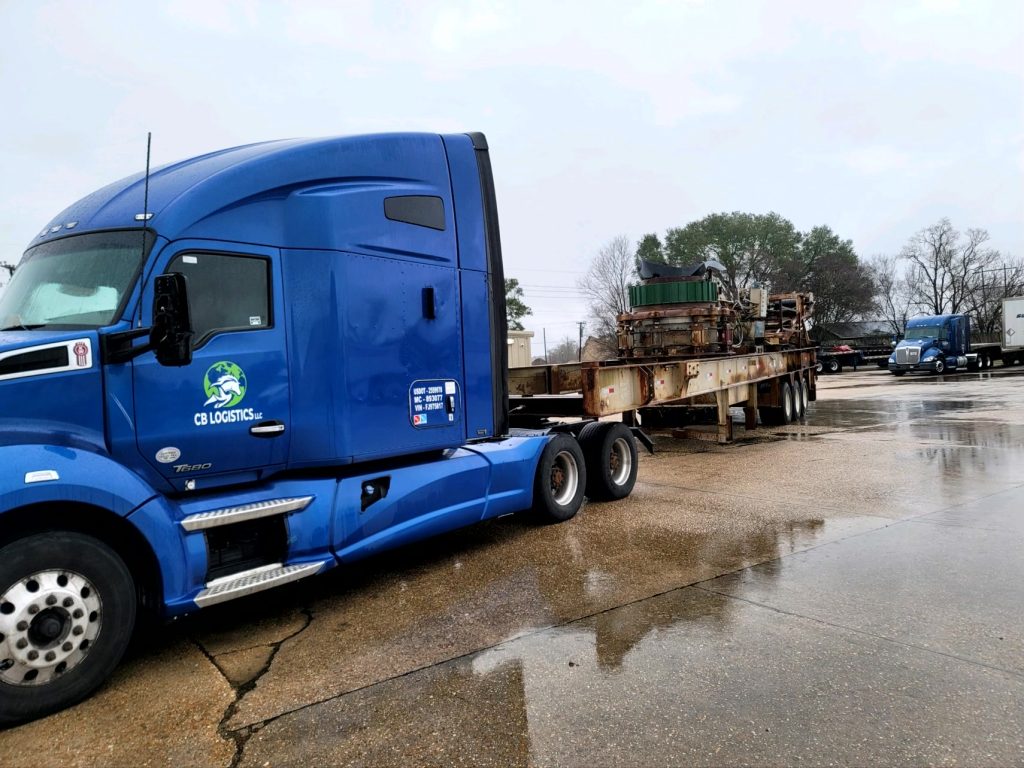Maine Truck Weight Limits
Freedom Heavy Haul can offer expedited Pickup and Delivery for any size shipment anywhere in the USA. Contact us today for No Hassle, No Pressure Pricing.
Truck weight limits are a critical aspect of road safety and infrastructure maintenance. In Maine, these regulations are particularly important due to the state’s unique geography and economy. This article delves into the specifics of Maine truck weight limits, offering insights for truckers, logistics planners, and policy makers. Discover how we ensure safe and compliant heavy haul transport in Maine with Freedom Heavy Haul.
Understanding Maine Truck Weight Limits and Regulations
Truck weight limits are not just arbitrary numbers; they play a crucial role in preserving road integrity and ensuring safety. Overloaded trucks can cause significant damage to road surfaces and pose a risk to all road users. The balance between efficient transportation and road preservation is a key consideration in setting these limits.
Importance of Weight Limits in Road Safety
Heavy trucks can exert immense pressure on road surfaces, leading to accelerated wear and tear. This degradation not only increases maintenance costs but also creates hazardous driving conditions. Learn how we prioritize safety in heavy haul transportation to protect road users and infrastructure.

Overview of National vs. State Truck Regulations
Truck weight regulations in the United States vary between national standards and state-specific rules. While the federal government sets baseline standards, individual states like Maine have the authority to establish their own limits based on local conditions and needs. Understand how we manage both federal and Maine-specific regulations to ensure your cargo is transported legally.
Detailed Look at Maine’s Weight Limits
Maine’s truck weight limits are designed to support its diverse industries while protecting its infrastructure. These limits vary depending on the type and configuration of the truck. Whether you’re transporting oversized machinery or other heavy equipment, request a quote from Freedom Heavy Haul to ensure you’re compliant with state-specific regulations.
Standard Limits for Different Axle Configurations
In Maine, the weight limits depend on the number of axles a vehicle has. For instance, a 2-axle vehicle has a limit of 34,000 pounds, while a 3-axle vehicle can go up to 54,000 pounds. The limits increase with the number of axles, reflecting the distribution of weight across a larger area.
Special Regulations for Heavy Combination Vehicles
Combination vehicles, especially those with a 3-axle truck tractor and a tri-axle semitrailer, are allowed up to 100,000 pounds, recognizing the need for heavier loads in certain industries.
Axle Spacing and Weight Adjustments
The distance between axles, not just their number, plays a significant role in determining weight limits. This is because axle spacing affects how weight is distributed on the road surface. Learn more about how we manage complex loads while staying within Maine’s axle spacing and weight restrictions.

Influence of Axle Spacing on Weight Limits
In Maine, the maximum gross vehicle weight is adjusted based on the axle spacing. For example, for four-axle vehicles, the weight limit is reduced if the axle spacing is less than a specific threshold.
Adjustments for Vehicles with Multiple Axles
Vehicles with more axles have their weight limits reduced by larger amounts for shorter axle spacings, reflecting the increased potential for road damage with heavier loads.
Maine’s Specifics: Interstate vs. State Road Limits
There’s a distinction in Maine between the weight limits on state roads and the Interstate Highway System. This differentiation addresses the varying capabilities of these road types to handle heavy vehicles.
Comparing State Roads and Interstate Limits
State roads, which often have differing construction standards and traffic patterns compared to interstates, have their own set of weight limits in Maine. These are typically lower than those on the Interstate Highway System to preserve the road quality and ensure safety.
Unique Limitations on Maine’s Interstate Highways
The Interstate Highway System in Maine allows for higher weight limits, recognizing the need for efficient long-distance transport. However, even these limits are carefully calculated to balance transportation efficiency with road preservation.
Exceptions to the Rule
Understanding that one size doesn’t fit all, Maine’s weight limit regulations include several exceptions for specific vehicle types and purposes.
Special Provisions for Agricultural and Construction Vehicles
Vehicles used in agriculture and construction have special exemptions to accommodate the specific demands of these industries. See how we handle agricultural and construction transport in Maine, ensuring your vehicles are compliant with state laws.

Exemptions for Emergency and Service Vehicles
Emergency and service vehicles, like snow plows and maintenance trucks, are exempt from certain weight limits. These exemptions are essential for public safety and efficient road maintenance.
Trailer Regulations and Restrictions
Trailers, particularly those in the 48’-53’ range, have their own set of restrictions in Maine. These regulations are crucial for maintaining road safety and infrastructure integrity. Let us help you navigate trailer regulations in Maine to ensure smooth, legal transportation.
Guidelines for Long-Haul Trailers
Long-haul trailers are subject to specific guidelines regarding weight distribution, axle spacing, and travel routes. These rules ensure that these large vehicles can operate safely without causing undue road wear.
Specific Routes and Restrictions for Large Trailers Enforcing Weight Limits
The enforcement of truck weight limits in Maine is essential to ensure compliance with these regulations. This enforcement is carried out through various methods and has consequences for violations.
Methods of Weight Limit Enforcement in Maine
Enforcement methods include weigh stations and mobile units that can check the weight of trucks on the roads. These measures are designed to catch violations and ensure that truckers adhere to the set limits.
Penalties for Violating Weight Regulations
Violating truck weight regulations in Maine can result in fines, penalties, and in severe cases, legal action. These penalties are a deterrent against overloading vehicles and encourage compliance.
Practical Implications for Truckers and Companies
Understanding and adhering to truck weight limits is essential for truckers and transport companies. It impacts how they plan their routes and load their vehicles.
Navigating Compliance with Weight Limits
Truckers and transportation companies must be well-versed in the weight limits and adjust their operations accordingly. This includes careful planning of routes, loads, and vehicle types to avoid penalties and ensure safe transportation.
Strategies for Efficient and Legal Transportation
Developing strategies to balance legal compliance with efficiency is crucial for transport companies. This might involve investing in newer vehicles with better weight distribution or adjusting logistics plans to comply with state regulations.
Conclusion
Maine’s truck weight limit laws reflect a balance between the needs of the transportation industry and the preservation of public infrastructure. Compliance with these laws is crucial for road safety and the longevity of road networks. Request a quote for safe and compliant heavy haul transport in Maine with Freedom Heavy Haul.
Summarizing Maine’s Truck Weight Limit Laws
This article has provided a comprehensive overview of the truck weight limits in Maine, highlighting the importance of these regulations in maintaining road safety and infrastructure.







